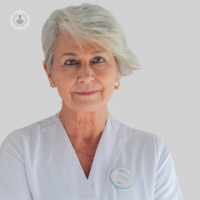Treatment for Parkinson application complementary therapies
Written by:Complementary therapies usually prescribed at times for the treatment of Parkinson's.
Physiotherapy: In Parkinson 's there is an alteration in the generation of internal rhythm and inner tracks to perform repetitive acts. Some authors suggest rehabilitation through the use of rhythm. The improvement obtained is accompanied by a metabolic increase in several brain areas involved in sensorimotor processes in positron emission tomography (diagnostic technique Petscan). Learn the use of internal and external tracks is very useful.
 Speech Therapy: The presence of speech and voice disorders in Parkinson is manifested throughout evolution and, especially, in advanced stages of the same. However, in early stages, and difficulties or lack articulatory speech power may appear. In a study of 230 patients conducted by Logemann in 1978, found that 70% had impaired speech and / or voice, 29% of whom stated that these disorders assumed them as inability of the disease. Several studies have demonstrated the efficacy of speech therapy intervention in Parkinson affected and in some of them, the maintenance of treatment benefit between six and twelve months post. Even getting a good joint, lack of facial expression and decreased or self Parkinson blinked affect both the issue of information, as to the reception and interpretation of the same. Therefore, patients with Parkinson not only show difficulty making facial expression changes according to the content of the message, but also to interpret such changes when performed by the interlocutor. On the other hand, it recognizes the existence of language disorder in Parkinson's. This means that in this disease, may not correctly interpret the true intent with the caller issues the message. An important part of this intention is transmitted through so-called prosodic features such as rhythm, intonation and melody. In addition Parkinson's patients can manifest oropharyngeal dysphagia affecting any of the three phases of the swallowing process: oral, pharyngeal and / or esophageal. It described that the incidence of these disorders is more or less 95%, but the number of patients that recognize such difficulties is much lower. The thickener substance added to the liquid to thicken, you can minimize the consequences of dysphagia, but is little known and little used.
Speech Therapy: The presence of speech and voice disorders in Parkinson is manifested throughout evolution and, especially, in advanced stages of the same. However, in early stages, and difficulties or lack articulatory speech power may appear. In a study of 230 patients conducted by Logemann in 1978, found that 70% had impaired speech and / or voice, 29% of whom stated that these disorders assumed them as inability of the disease. Several studies have demonstrated the efficacy of speech therapy intervention in Parkinson affected and in some of them, the maintenance of treatment benefit between six and twelve months post. Even getting a good joint, lack of facial expression and decreased or self Parkinson blinked affect both the issue of information, as to the reception and interpretation of the same. Therefore, patients with Parkinson not only show difficulty making facial expression changes according to the content of the message, but also to interpret such changes when performed by the interlocutor. On the other hand, it recognizes the existence of language disorder in Parkinson's. This means that in this disease, may not correctly interpret the true intent with the caller issues the message. An important part of this intention is transmitted through so-called prosodic features such as rhythm, intonation and melody. In addition Parkinson's patients can manifest oropharyngeal dysphagia affecting any of the three phases of the swallowing process: oral, pharyngeal and / or esophageal. It described that the incidence of these disorders is more or less 95%, but the number of patients that recognize such difficulties is much lower. The thickener substance added to the liquid to thicken, you can minimize the consequences of dysphagia, but is little known and little used.
Psychological therapy: Regarding the psychosocial impact can be said to be immediate. After the diagnosis of Parkinson an impact on the lives of those affected and their families, which will induce a series of changes both immediately and over the years occurs. Sometimes, adaptation to these changes is not easy and the high prevalence of depression and anxiety in this disease does not favor the process. Counseling can provide adequate guidance for easier and less painful adaptation and implementation of psychoeducational programs com the Edupark program, in early stages, it is of great interest.
Cognitive rehabilitation: Most affected by Parkinson develop some type of cognitive impairment (AC). In a study of 125 patients, 24% had evidence of cognitive dysfunction, with attention and executive functions prominent alterations in newly diagnosed Parkinson. The elderly, the late onset of the disease, duration of motor symptoms (ie, more than 10-15 years of motor symptoms), severity of motor symptoms (rigidity and akinesia), the rapid deterioration of the functions executive, presence of hallucinations, and depression (30-50%) are more predictors of cognitive impairment in Parkinson's. Cognitive disorders have functional effects: affect the quality of life, exacerbating functional disability, promoting and increasing engine decline caregiver stress. Cognitive rehabilitation (RC) has been demonstrated as an effective treatment in various neurological diseases. It promotes brain plasticity facilitates neuronal growth and induces functional reorganization. There are up to now few studies on the benefit of cognitive rehabilitation in the improvement of executive functions is highlighted and that the benefit remains six months.
Parkinson: Objectives of complementary therapies
All complementary therapies aim to improve the quality of life of patients affected by Parkinson contribute to their independence and reintegration into social and family life.
Physical therapy aims to delay and / or minimize the functional implications that cause the primary pathology or correct and reeducate secondary complications, optimizing the most patient resources. They are the responsibility of physiotherapy: maintain or improve ventilation; maintain or improve joint arches; preserve muscle tropism, strengthen muscles and prevent edema. Efforts will be made to re-educate the position; improve facial and body expression; righting reactions, balance and coordination. In addition, strategies on how to proceed with a lock, training in the application of external or internal tracks will be offered, and how to react to falls. Also along with the occupational therapist, retrain the execution of transfers or changes of position.
Speech: The speech therapy is proposed that patients are aware of their communication difficulties and learn techniques and strategies to improve speech intelligibility. Speech therapy also prevents and treats swallowing disorders.
Occupational therapy: Occupational therapy is a discipline that promotes the rehabilitation of the person filing any handicap or disability, to access the maximum range in your environment. Its main objectives are: to retrain in order to improve loss-making functions, readptar by developing residual capacities taking into account the demands of daily life and needs of autonomy of the person and advise the affected and their families about solutions practices to promote the integration of the person in their midst.
Psychological intervention: In all its forms, the aim of the psychological intervention is to improve the welfare of the affected Parkinson, reduce emotional distress informal caregiver, foster personal autonomy and standardize the different vital areas. The aim of cognitive behavioral psychotherapy is based self-management skills are acquired to effectively solve problems and that the changes to daily life become widespread during the sessions. This guidance is based on the assumption that most behaviors, emotions and troubled thoughts are learned and can be changed by new learning.
Cognitive rehabilitation: The main objective is to develop strategies to improve cognitive deficits caused by brain dysfunction associated with Parkinson's disease. It arises in the context of a comprehensive rehabilitation plan can be initiated in training cognitive functions and ending training in problem solving.
Edited by Noelia García Pino


